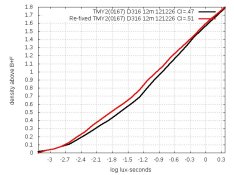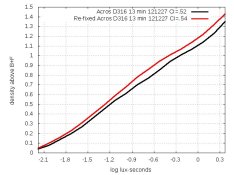Kirk Keyes
Member
You need to be contacting the wedge to the film.


Mark; You are still removing Dmin, right? The technically valid comparison would include Dmin. PE
Besides, if you slide curves around, as I noted earlier, then you can do the sliding for speed, curve shape, and B+F or minus B+F just by sliding the two sheets of paper. PE
Fixing or re-fixing can change tone, or the color of the Dmin can change. PE
Mark - is the Dmin of 0.26 with your developer or XTOL? Just asking because I usually get slightly lower Dmin with TMax films with XTOL (and other developers). Usually 0.20 +/-.02. Then again it could just be a difference in densitometers.
Mark; I'll bet that some would find it convenient to have the formula and the mixing instructions in one long post that they can cut and paste for their lab. Could you please do that. I know it would be nice for my own work. Thanks. PE
Thanks. I'm sure everyone will enjoy this. PE
What's a Mol? As in: Sodium metaborate 4 mol 2.2 g
Is this a different Sodium metaborate than found at Photographers Formulary?
You may think this a dumb question and perhaps it is, but ... I want to be sure I have the correct chemistry.
Thanks for your efforts, they are appreciated.
Make the phenidone up at 10x in alcohol. That would be 1/2 gram say in 100 ml of alcohol. Then add 1 ml of this to the concentrate.
And guys, always weigh out viscous liquids. Never measure by volume.
PE
 ?
?Anyone have accurate numbers for the weight of 6 ml of HC110 concentrate?
| Photrio.com contains affiliate links to products. We may receive a commission for purchases made through these links. To read our full affiliate disclosure statement please click Here. |
PHOTRIO PARTNERS EQUALLY FUNDING OUR COMMUNITY:  |


